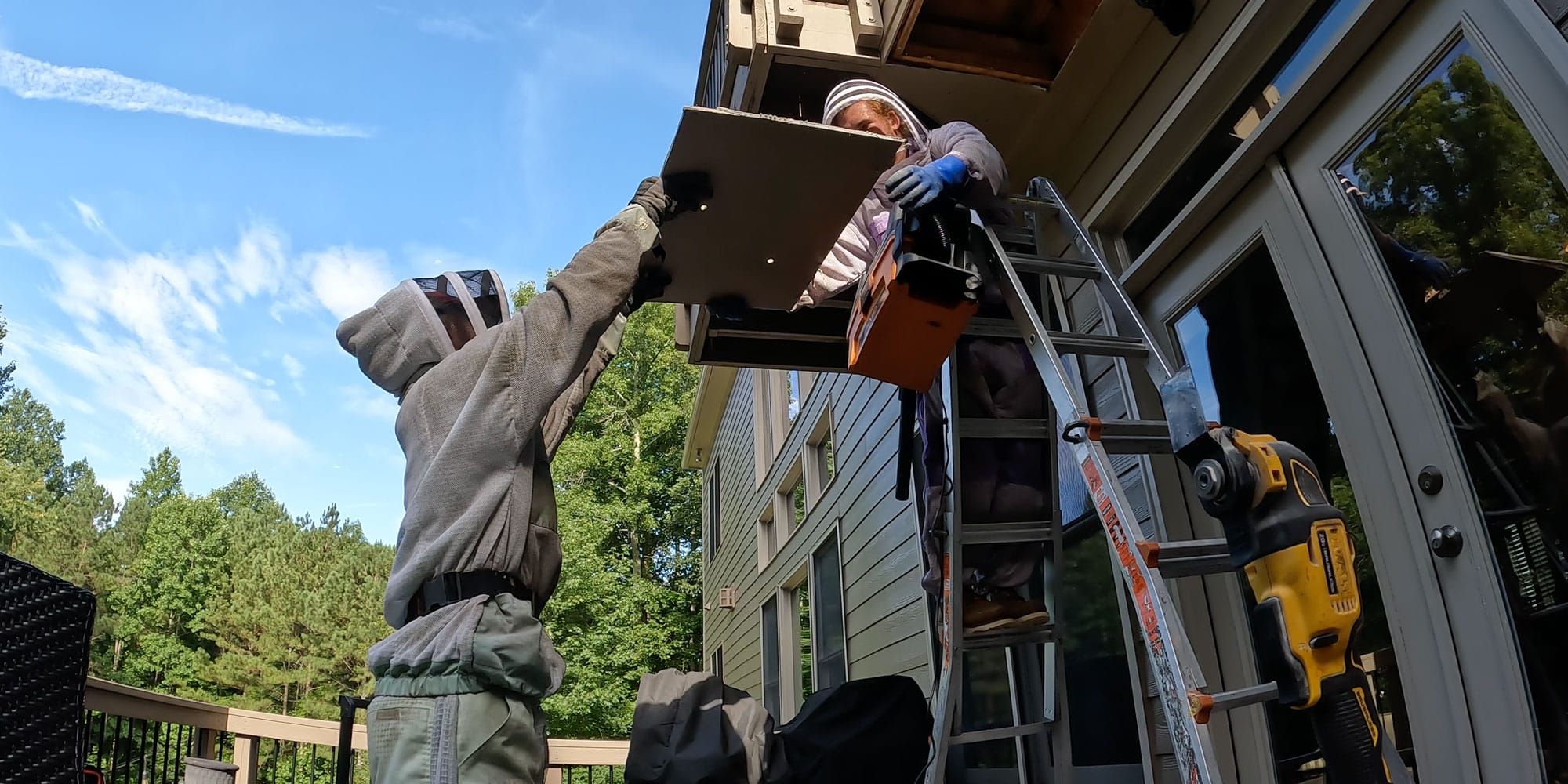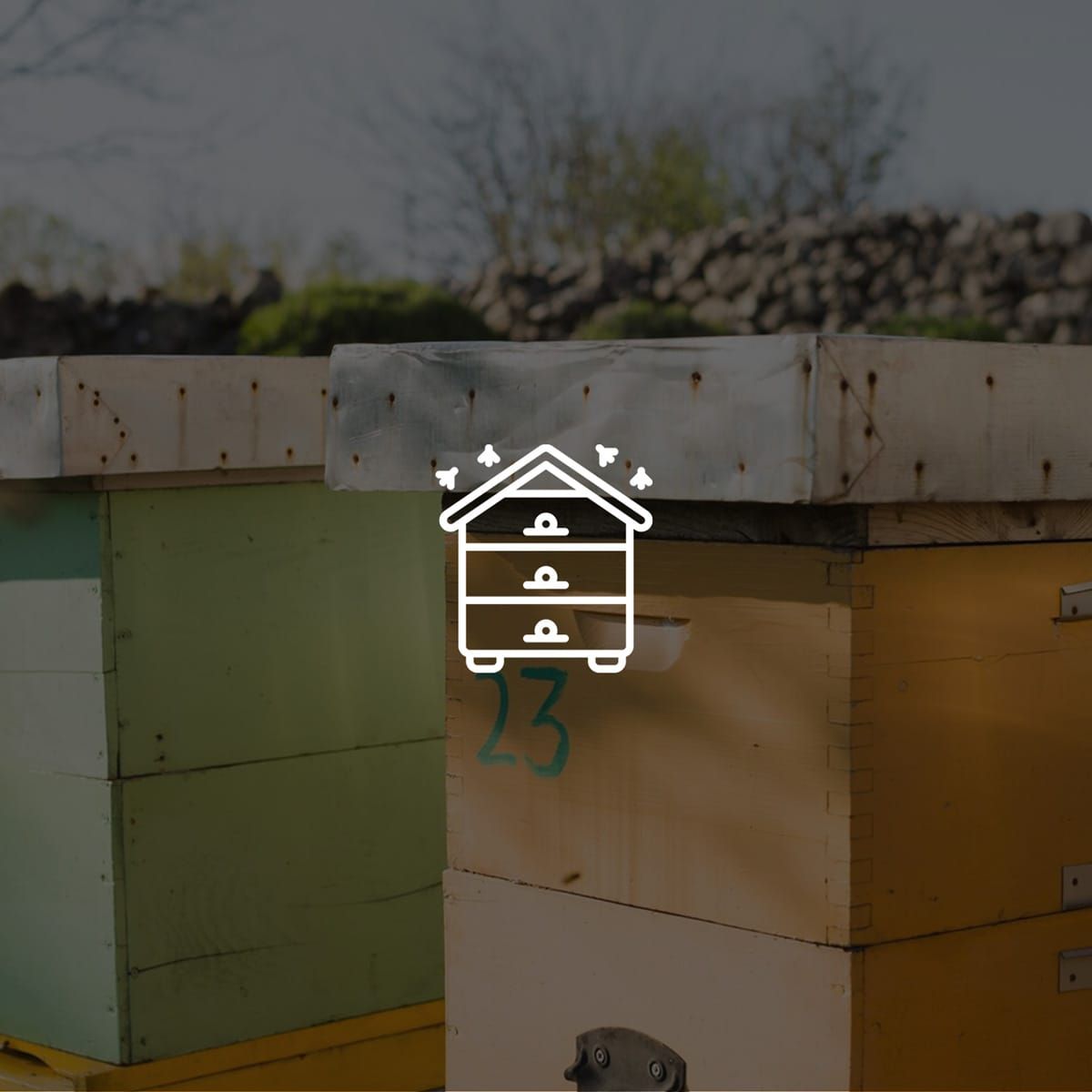
Marietta Bee Removal – Safe, Humane & Professional
Live Honeybee Removal & Relocation • Yellow Jacket & Hornet Removal • Inspections • Bee Proofing
Marietta’s Bee Removal Experts
Permanent bee removal solutions since 2013. Humane live removals, full comb cleanup, structural repairs, and bee proofing—performed by licensed, insured specialists with workers’ comp.
01 |
Live Removal & Relocation |
We save honey bees whenever feasible; no spray “quick fixes.” |
02 |
Bee + Construction Skill |
Skilled cut-outs with clean access and careful repairs. |
03 |
Full Hive Cleanup |
Comb, brood, and honey removed; cavity cleaned and insulated to deter return. |
04 |
Guaranteed Location |
Re-infestation guarantee for the exact same spot after repairs are complete. |
Bee Removal Services in Marietta
Homes, businesses, and apartments—safe removals plus long-term prevention.
Honeybee Removal (Live & Humane)
Cut-outs from eaves, soffits, chimneys, columns, and walls—relocated to beekeepers.
Yellow Jacket Removal
Structure and ground nests removed—especially common after wet springs.
Hornet Removal
Safe removal of high and hidden nests with strict safety protocols.
Bee Inspections
Identify species, locate the hive, and provide a clear plan and quote.
Braves Stadium Swarm & 45-Foot Eave Hive
From Truist Park swarms to tall-eave cut-outs, we’ve handled Marietta’s toughest bee jobs—safely and cleanly.
Truist Park Swarm Call
Same-day response—swarm had moved on, which is common (1–3 days). Education and prevention tips provided on site.
45-Foot Eave Hive
Boom lift used for safe access above ladder range; 4-ft, 6-week-old comb removed and cavity cleaned.
Rescued Nearby Swarm
Parent colony had just swarmed to a tall tree—lift repositioned to safely capture and relocate.
Our Bee Removal Process
What to expect for a Marietta removal—from inspection to relocation.

1) Inspection
Locate hive with tools (e.g., IR thermometer) for precise, minimal access cuts.

2) Removal
Open area; remove bees, comb, brood, and honey for humane relocation.

3) Insulate & Proof
Fill voids with fiberglass insulation; seal entries (clear/white caulk) to deter return.

4) Relocation
Transport live bees to responsible beekeepers whenever possible.
Serving Marietta & Nearby
Marietta, East Cobb, Kennesaw, Smyrna, Mableton, Vinings, Powder Springs, and surrounding Cobb County communities.

Schedule Your Bee Removal in Marietta
Fast response • Humane removal • Licensed & insured
Marietta Bee Removal FAQs
-
How long do swarms stay put?
Usually 1–3 days while scouts search for a permanent cavity. We can capture swarms safely before they move into a structure.
-
Can you reach high eaves?
Yes—ladders up to ~40 ft and boom lifts when needed for safe access and clean cut-outs.
-
Do you repair after removal?
We repair typical access areas (not brick/stone/stucco), add insulation to voids, and seal entries with clear/white caulk—paint-ready.
-
What about yellow jackets?
We remove both ground and aerial/structural nests. In wet years, more aerial nests appear—often reaching basketball size (5,000+ wasps).
